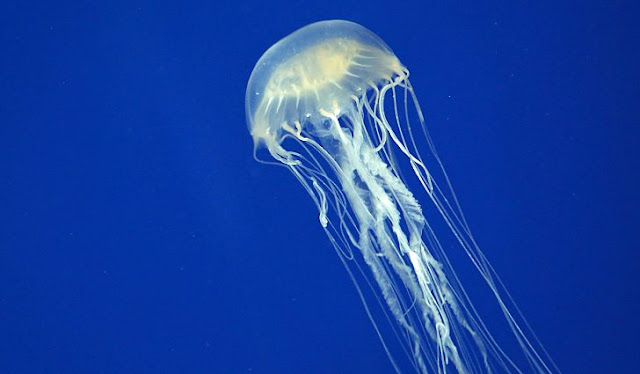
A couple is the latest victim of Dikya or a type of JellyFish that has a poisonous and fatal sting.
Just recently, a 7-year-old Filipino-Italian girl died from a jellyfish sting while enjoying her vacation with family in Caramoan Island in Camarines Sur.
According to her mother, Gaia Trimarchi was enjoying the shallow waters of Sabitang Laya island, picking seashells, when she heard the girl suddenly scream in pain. Apparently, Gaia was stung by a jellyfish in the lower part of her body.
Within minutes, the skin of Gaia’s affected leg turned purple as she desperately tried to remove the barbs which had then spread to her hands.
It took nearly an hour before they reached the hospital in Caramoan town, but by then Gaia already succumbed to a serious allergic reaction caused by the box jelly fish’s venom which is considered to be among the deadliest in the world.
What is a jellyfish?
Jellyfish are among the most poisonous sea creatures in the world. In the Philippines alone, it kills 20 to 40 people each year as per the United States National Science Foundation’s research.
Jellyfish belong to the subphylum Medusozoa family; a major part of the phylum Cnidaria. Its tentacles are armed with stinging cells which are used to capture prey or defend itself from predators.
The box jellyfish (Irukandji jellyfish), which stung Gaia, has a square-shaped, box-like bell from each of the four lower corners where a short pedalium or stalk hangs with one or more long, slender tentacles.
Jellyfish Sting
Jellyfish stings by its tentacles, through which it releases a venom that paralyzes its prey. Normally, a jellyfish won’t attack humans, but anyone swimming close to it may be stung just the same.
Not all species of jellyfish venom can cause adverse reactions in humans; only some.
But the sting of the poisonous ones can cause mild discomfort to extreme pain and death. One who gets stung by a box jellyfish would experience spasms, followed by paralysis, cardiac respiratory arrest and, worse, death in just minutes.
Ads
First Aid
Gaia’s mother blamed the resort and the boatmen for not having vinegar readily available which could have saved her daughter’s life. Instead, what they did was rub some gasoline on Gaia’s legs which proved to be ineffective.
Vinegar is the best and proven first aid for jellyfish stung before victims may be taken to a hospital.
Vinegar is a type of weak acid that prevents jellyfish stingers (tentacles or barbs) from firing more stings. NOTE: Rinsing the affected part with COOL, FRESHWATER would only trigger stingers to fire more.
Also, it is advisable NOT to scrape off stingers from the affected skin as this may make the matters worse. Instead, follow these steps as first aid:
- Quickly remove the victim from the water.
- Rinse the area with vinegar which should come in handy during swimming
- Don't rub the affected area, to prevent the injury from getting worse.
- Use tweezers to remove any tentacles still attached skin. Do NOT scrape the area using a hard object such as a credit card.
- Do not apply ice or ice packs to the area, ‘though a hot shower or soak may help ease the pain.
- Immediately seek help from healthcare professional and ask if pain relievers might help the victim.
WATCH THE FIRST AID TIPS VIDEO BELOW
Ads
If the victim shows adverse reactions like difficulty in breathing or swallowing, swollen tongue or lips, nausea or vomiting, extreme pain or a headache, dizziness or muscle spasms, CALL AN AMBULANCE IMMEDIATELY AND TAKE HER/HIM to the nearest hospital.
Finally, before swimming on a beach, ask the resort management or any locals if jelly fish are roaming in the waters, then avoid the water altogether if similar incidents have been reported in the past.
This article is filed under: health, first aid for the jellyfish sting, jellyfish sting, dangers of jelly fish
READ MORE:
Hot Water Gives More Benefits Than Cold Water


Not Just a Refreshing Drink: 13 Amazing Health Benefits Of Coconut Water

Hot Water Gives More Benefits Than Cold Water

Herbal Medicinal Plant Katuray, Benefits and Uses

Not Just a Refreshing Drink: 13 Amazing Health Benefits Of Coconut Water

©2018 THOUGHTSKOTO

